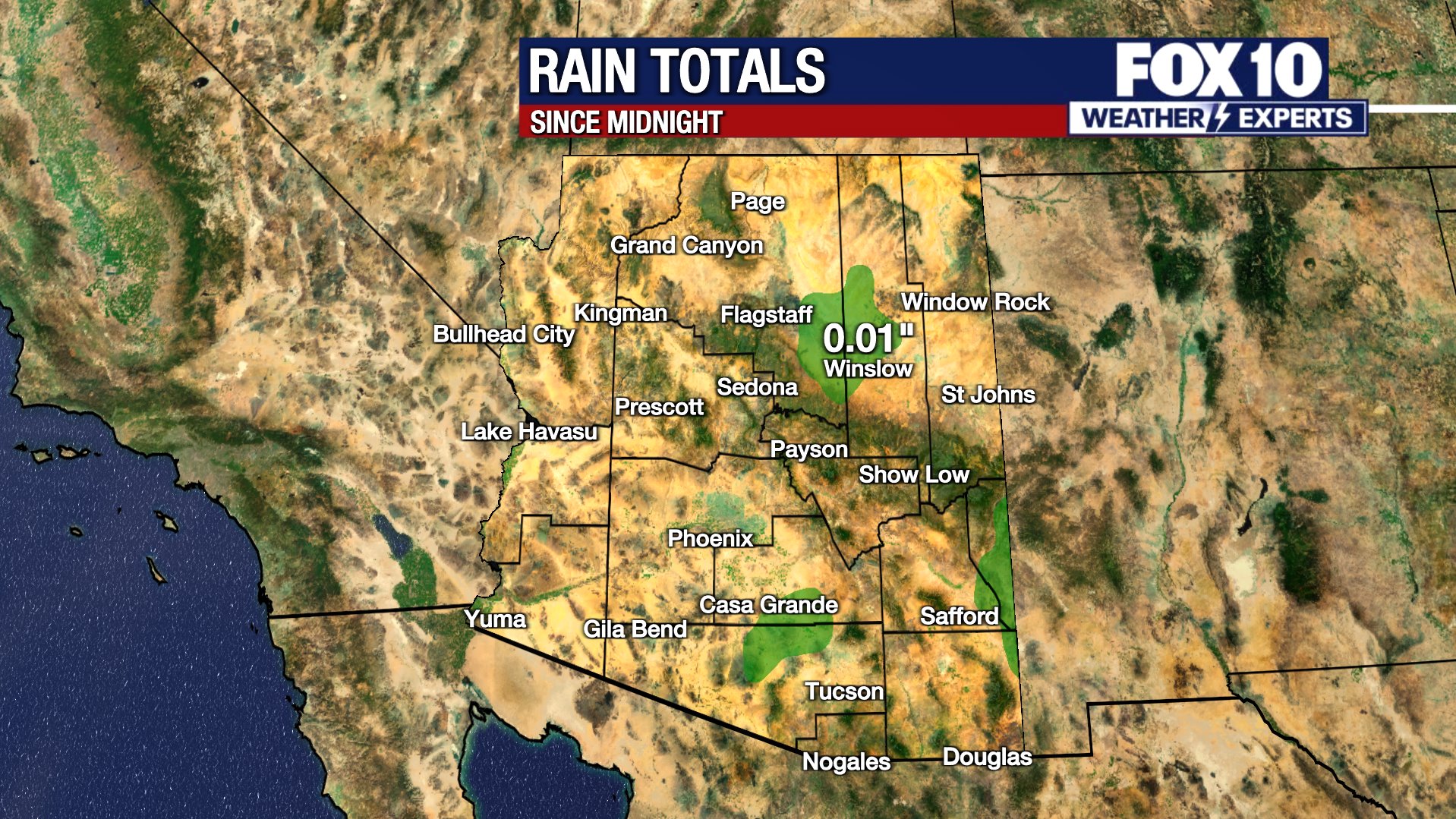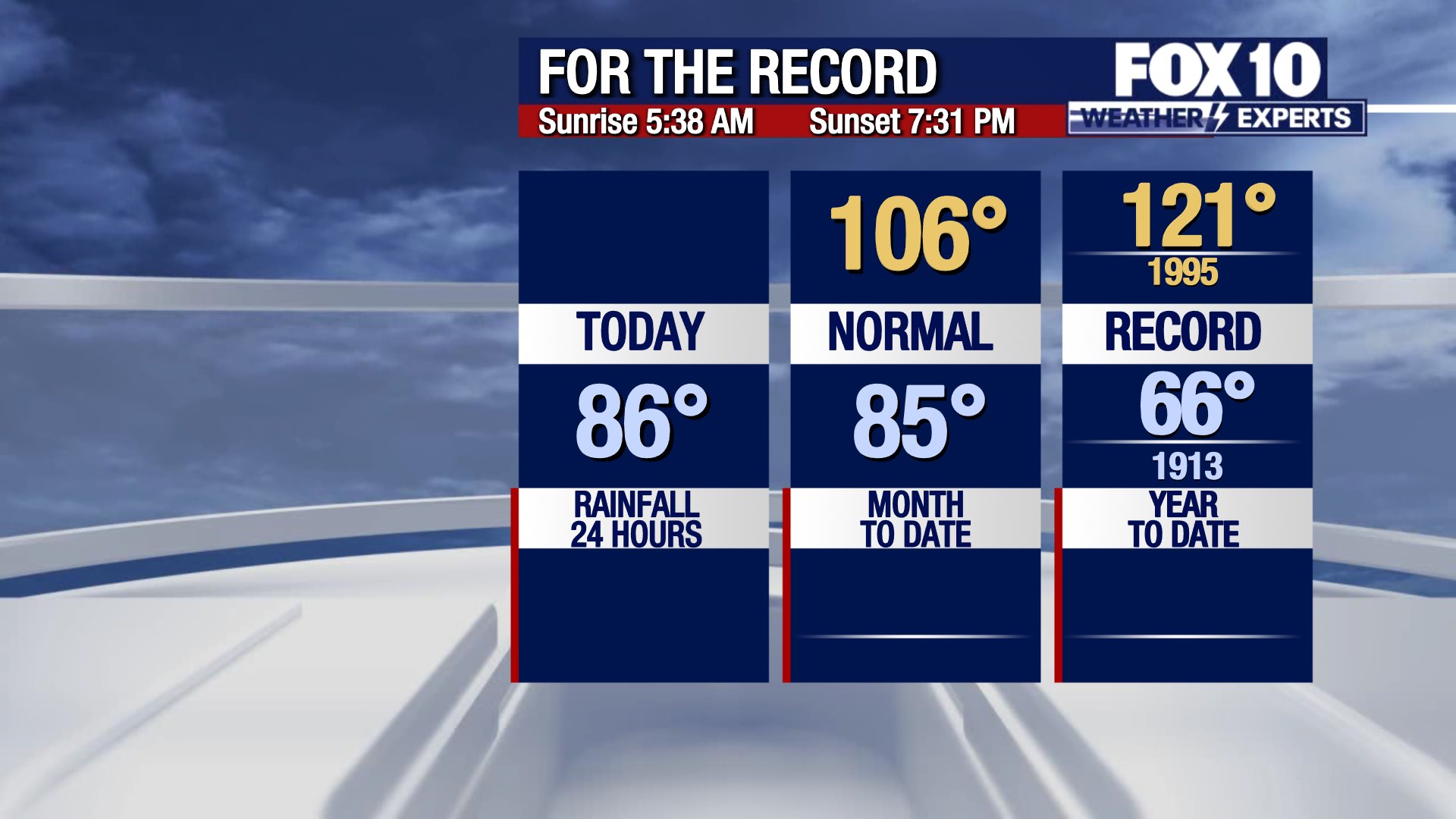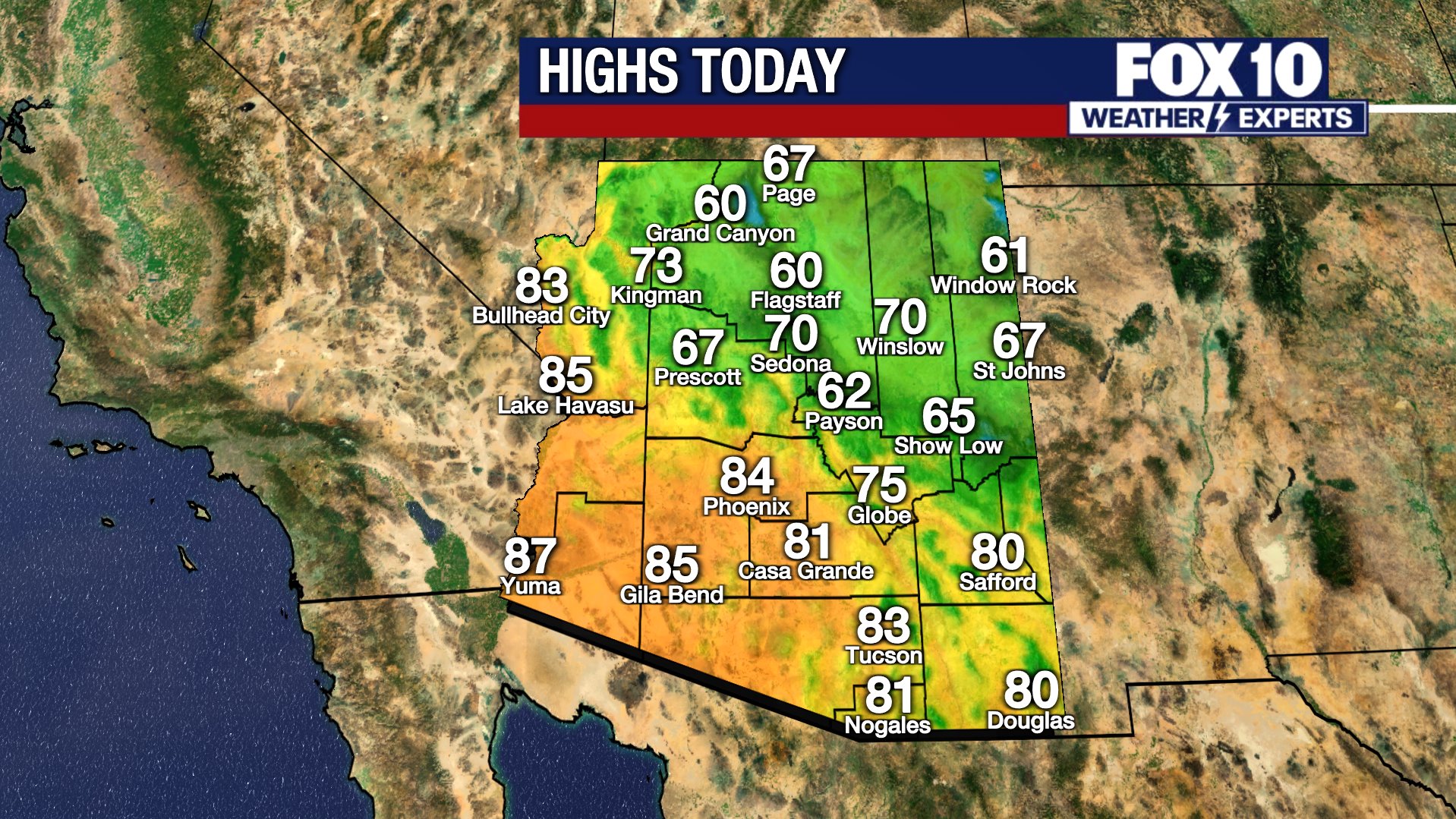Arizona weather forecast: Excessive Heat Warning extended as heat wave persists
Evening Weather Forecast - 9/29/2024
We are expecting hot temperatures to persist for most of the coming workweek.
Sunday saw another day of record-breaking heat, according to forecasters with the National Weather Service.
In a post made on X (formerly Twitter), officials said Phoenix saw a high of 113°F, which broke the previous daily record of 107°F that was set in 2001 and 2003.
"We have now seen 6 days in a row with a record high temperature in Phoenix. Unfortunately, record highs are forecast to continue through the upcoming week," read a portion of the post.
Meanwhile, an Excessive Heat Warning that was issued for the Phoenix area and other parts of Arizona and California has been extended to last until Friday evening.
"High risk of heat stress or illnesses for anyone without effective cooling and/or adequate hydration," read a portion of the warning. "Avoid exposure to the sun from 10 a.m to 6 pm."
For Monday, NWS is calling for a high of 109°F for the Phoenix area, which is higher than the record of 107°F that was set in 2010.
"Above normal temperatures will continue through at least the first two weeks of October," read a portion of the forecast.
Southern Arizona
Record-breaking heat was not just limited to the Phoenix area, as officials with the NWS office in Tucson said they saw a record-breaking day as well, in terms of heat.
Per forecasters, Tucson International Airport saw a high of 104°F on Sunday, breaking the previous record of 101°F that was set in 2010.
"This is the 5th day in a row with a daily record high broken in Tucson," read a portion of the post.
Nogales also saw a day of record-breaking heat, as the area reached 99°F. The previous record of 97°F was set in 2020.
For the next workweek, NWS forecasters saw Tucson could see 104°F on Monday and Tuesday, and 101°F on Wednesday.
Northern Arizona
The Flagstaff area also saw a day of record-breaking heat, with a high of 84°F, breaking the previous record of 83°F that was set in 2010.
Forecasters also say some parts of Northern Arizona, like Bagdad, Camp Verde and Cottonwood, have a 100% chance for high temperatures over 95°F for most of the next workweek.
You can always check the latest weather conditions by visiting the FOX 10 Phoenix weather page, or download the Free FOX 10 Weather app, which is available on Apple iOS and Android.
Scroll down this page for satellite and radar, day planner, records, current temperatures, 10-day forecast, forecast highs, and recent rainfall totals, plus live video feeds.

The following heat safety information was provided by the Scottsdale Fire Department.
What are Heat Emergencies?
Heat Cramps: Profuse sweating, fatigue, extreme thirst, muscle cramps
Heat Exhaustion: Headache, dizziness, weakness, nausea/vomit, Cool/moist skin
Heat Stroke: Elevated temp. +103 degrees, confusion/irrational behavior, dry/hot skin, rapid shallow breathing, rapid weak pulse (shock), seizures, unconscious
What to do
- Get person into shade or cool location
- Cool person with cool, wet cloths (neck, groin, armpits, head) and fan body
- Sip cool water if person is alert
- For muscle cramps, massage muscles gently, but firmly until relaxed
- *If symptoms worsen, call 911
What not to do
- Do not give anything by mouth if person is vomiting, unable to swallow or unconscious
- Do not underestimate the seriousness of a heat emergency
- Prevention/Preparation for hike/exercise in heat
Know your limitations
- Hydrate (begins day prior to hike/exercise, hour before hike, during and after)
- Wear proper clothing, lightweight and light color, protect head, proper shoes
- Always carry a cell phone and best to hike with company
- Always tell someone where you are hiking and when to plan to return
Preventing heat exhaustion/heat stroke
The Arizona Department of Health Services stated the following precautions can be taken to prevent heat exhaustion or heat stroke:
- Stay in air-conditioned buildings
- Find a cooling center/hydration station
- Limit outdoor activity during the hottest part of the day (mid-day)
- Check on at-risk friends, family, and neighbors at least twice a day
- Drink water before, during, and after working or exercising outside
- Check the UV Index
- Check the heat risk map
Driving in extreme temperatures
The Arizona Department of Transportation’s tips for driving in extreme temperatures include:
Have sun protection: In addition to an umbrella, take sunscreen and a wide-brimmed hat and wear loose-fitting, light-colored cotton clothing.
Fuel up: Keep your tank at three-quarters full. Running out of gas, especially in a remote location, is dangerous in extreme heat.
Hydrate: Take a cooler to keep extra drinking water cold, and consider adding several frozen bottles of water to use for cooling off or to thaw and drink if needed. Make sure everyone, including pets, stays hydrated.
Get help: If your vehicle breaks down in extreme heat, call for assistance right away to reduce wait time, and run the AC. If the AC isn’t working, roll down all windows.
Wait safely: If the temperature inside your vehicle becomes too hot, everyone, including pets, should exit carefully and seek out or create a shaded area as far away from the travel lanes as possible. Be careful walking on the road surface, which can be hot enough to burn skin. Keep your shoes on and try to keep your pets’ paws off the pavement. If you are stopped along the highway, raise the front hood and turn on hazard lights. Please keep in mind that parking in tall brush can start a fire.
Check your vehicle: You can help avoid breakdowns and blowouts by making sure your vehicle is in good operating condition. Check your air conditioner and coolant levels, top off any vital engine fluids and make sure your battery is up to par. Check your tire pressure, as the combination of under inflated tires and hot pavement can lead to a blowout.







